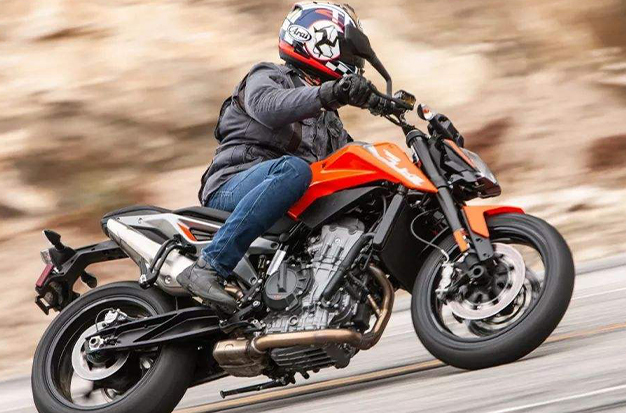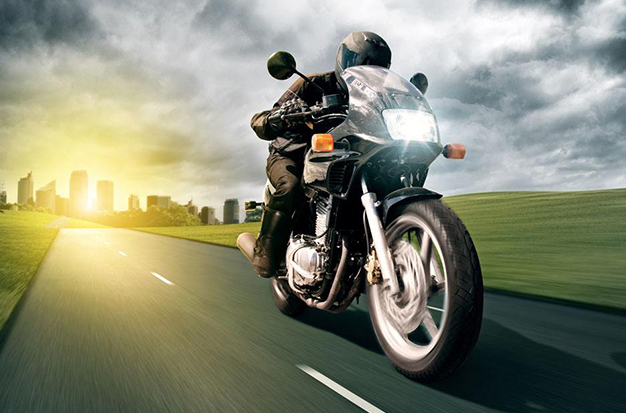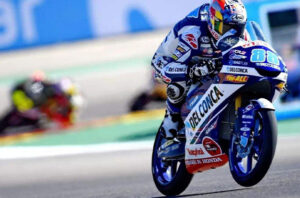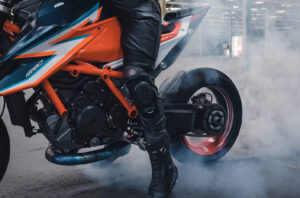A motorcycle can be downshifted in a number of ways. With a little pressure on the shifter and a closed throttle, you can first quickly shift it down a gear without using the clutch. Since it is difficult on the bike, this approach is not particularly advised. Second, to make the transition more seamless, you can pull the clutch in, choose the next gear, and then slowly release the clutch. The matched rev downshift technique described below, however, is possibly the best approach.
Why Do You Always Need To Downshift When Stopping Your Motorcycle?
It’s crucial for your safety to downshift when stopping a motorcycle. You can make sure that your motorcycle is prepared to accelerate again in an emergency by downshifting one gear at a time.
If you don’t downshift as you slow down, the gear you’re currently in will be too high for the slow speed. Your rear tire will lock up as soon as you release the clutch to accelerate in an emergency, which will likely cause you to skid and crash. This is hazardous.
If you don’t know how to do it correctly, downshifting gear by gear might seem tedious and even distracting. But believe me, it’s crucial and only a diversion until you get the hang of it.
Once you have mastered it, you will be the enthusiast who instructs other people on the value of downshifting in forums. I can assure you of that, but for the time being, I suspect you still have a lot of queries.
Downshifting harms the engine, right? And how do I properly do it? All of these questions will be addressed in the sections that follow.
How Do I Downshift On A Motorcycle?
Changes in gear on a motorcycle are made by downshifting. In theory, the process is easy to follow. To put it another way, you pull in the clutch lever, depress the shifter, and then release the clutch lever.
To downshift effectively, though, you’ll need more than just the fundamentals. Additionally, you must be able to adjust the engine speed of your motorcycle to match the speed of the highway. Even though it seems like a straightforward process, it may take hours of riding to develop the habit of downshifting. If downshifting a motorcycle does not come naturally to you, it might take you a lot longer to get it.
Mastering downshifting on a motorcycle requires more than just knowing when to do it. You must instead learn to pay attention to the road and your bike. Your bike might jerk forward if you downshift improperly. A lurch could be disastrous if you aren’t paying attention, as one might anticipate.
Six Easy Steps Will Teach You To Downshift
To make these movements simpler, it’s crucial to place your hands correctly on the grips of the bars. You control the bike’s transmission with your left foot and hand while controlling the brakes and throttle with your right foot and hand.
Modulating Brake With 2 Fingers
In order to perform smoother downshifts, as I will describe, new riders must eventually get used to manipulating the brake lever with just one or two fingers. My personal preference is to modulate the brakes with my middle and index fingers while controlling the throttle with my little and ring fingers.
Pulling The Cluth Fully
Pull the clutch lever in just as you begin to brake slightly, then select gears as usual. Pull it all the way to ensure smooth shifting that minimizes unnecessary wear on your transmission system, and start modulating the front brake as soon as you do so. Although you could use both brakes, keep in mind that your right hand must be used to operate the throttle and brake levers.
Revving Up Carefully
Use your palm or your ring and little fingers to increase engine speed a little as you keep the clutch engaged and get ready to downshift. Or, if it makes more sense to you, you can apply the brake lever with the other three fingers while using your thumb and index finger to control the throttle. Just keep in mind to rev the engine up to about 50% of its maximum, especially during complete turns, and to learn from experience how much to rev it up in every circumstance.
Shifting In Specific Situation
You can downshift to the required gear by pressing the accelerator pedal all the way down to first gear. Naturally, depending on the circumstances, you will make a different decision here. In advance of impending traffic slowdowns, turns, stops, and other situations, you should be prepared and aware of how to downshift.
Many riders prefer to apply the series of steps by placing two fingers on the clutch lever, causing it to bump against the other fingers to indicate that it has been pulled effectively. To release the clutch plates, the lever must be pushed in just far enough. Trying preloading the shifter by pushing it downward just before releasing the clutch may help the transmission shift into the next gear more quickly.
Releasing Brakes And Cluth Immediately
Release the brakes while the engine is still running a little, and then release the clutch lever right away to help the transmission shift into the desired gear quickly. When using the lower gear, you want to make sure that it is turning at the same rate that the engine needs to move at to maintain the same road speed. You won’t need to slip the clutch as much as a result because the gear changes will be more seamless as a result.
It’s only a matter of applying enough power to match the engine rpms that must inevitably increase in lower gears. Naturally, you must throttle back if you are stopping or slowing down. You must keep the throttle open until you let go of the clutch and shift into the next gear, however, if you intend to reenter lower gears and continue moving.
Redoing Usually
Once you understand how to do it, you should be able to downshift smoothly with little to no change in how the motorcycle behaves as you roll. If it does jerk forward after releasing the clutch, it means you were revving the engine too much. The next time, adjust your throttle a little more slowly. However, if you slowed down suddenly, the engine was not revved up enough. For the next time, remember to regulate for a little more power before letting go of the clutch.

What’s The Best Way To Downshift?
To downshift properly, you must get your hands, feet, and bike to move in unison. When moving through several gears, downshift as quickly as you can. By only switching gears when necessary, you can eliminate any extra movements.
However, keep in mind that your ability to downshift quickly and successfully depends on the quality of your equipment. If your clutch, brake, pedals, or another component is broken, you might find it challenging to downshift expertly.
You shouldn’t skip routine maintenance, even though a basic inspection may reveal undiscovered problems. Any choppy downshifting will likely be caused by operator error rather than a mechanical issue if you keep your bike in top condition.
Finally, practice makes perfect when it comes to downshifting a motorcycle. You’ll experience a period of time when you’ll question how you ever managed to shift into another gear. To become an expert downshifter, however, requires practice. Start in a controlled environment before venturing out on quiet rides.
You’re downshifting improperly if you’re trying to zoom toward a fixed object while doing so. You should think about your motorcycle’s clutch now that you’ve mastered the downshifting principles. If the shifter on your bike has seen better days, think about replacing it.
Your motorcycle’s value, performance, condition, and aesthetic appeal are all protected when you install high-quality gear shifters. Rather than riding a bike that needs some maintenance, make an investment in your machine today.
Motorcycle Downshifting Techniques
Proper Motorcycle Lane Positioning
Riders start to combine a quicker clutch release with a throttle blip as they climb the skills curve. The downshift is virtually imperceptible when it is functioning properly. You need to give a little more throttle before releasing the clutch if the revs drop and then rise as you let out the clutch. Reduce throttle if the bike accelerates quickly. In either case, the chassis is thrown off balance, making it harder to maintain a clean, precise line through the corner.
Making the corner entries simpler by separating the braking and doing it early will help you improve your ability to match the engine speed to the bike’s road speed. Take every chance you can to practice downshifting until you are able to do it automatically without thinking about how much throttle is needed.
The real fun can now start: combining the braking and downshifting. You should start riding with two fingers permanently on the brake lever if you weren’t already. Moreover, the process will be simpler if you place your hand correctly on the grip. Your wrist should still be slightly bent downward as your fingers rest on the brake lever even after the throttle has been completely closed. This isn’t the choked-up drag racer position.
Motorcycle Riding In The Wind And Rain
Some riders find it easier to move by covering the clutch lever with two fingers. You can tell when you’ve pulled the lever in too far by rubbing it against your other fingers. (Use all four fingers to make sure the clutch is completely released when coming to a stop.)
There is a trick for your foot as well: Although it may seem that downshifting occurs simultaneously with clutch action, you should preload the shifter by pressing down on it just before you release the clutch to ensure that the transmission shifts into the next gear without delay. When the clutch is fully engaged, release the shifter as usual.
Regardless of how many gears you are descending through, the process is the same. Just quickly release the clutch after each shift. While the clutch is engaged, don’t tap down more than one gear. Any slight errors you make in matching the engine speed will be covered up if you complete the downshift(s) early in the braking. This also enables you to concentrate on determining your corner entry speed and when to release the brakes.
Downshifts will be much smoother if unnecessary movement during gear changes is eliminated. If you want to operate the clutch with the least amount of finger movement, make sure the point of full clutch disengagement is as far away from the grip as you can get it while still leaving 2 to 3mm of freeplay at the lever’s end. Similar to this, the gearshift lever should be positioned so that you don’t have to lift your foot off the peg to press down on the shifter. However, it shouldn’t be positioned so low that it interferes with upshifts.
Load Your Motorcycle
In the city, on the highway, and on the racetrack, mastering simultaneous braking and downshifting will pay off. You’ll be able to accelerate out of a corner on a canyon road and motor away from trouble in the city if you’re in the right gear for your speed. Practice is all that is necessary.
The hardest motorcycle maneuver to master is likely to be smoothly braking while downshifting. Doing it in the wet earns bonus points
Should I Downshift To Protect My Engine?
If done properly, downshifting is not at all bad. As you downshift, you need to match the revs. It’s challenging to get it right the first time. However, it ought to come naturally after a few repetitions.
Downshifting improperly could, at best, result in a slight jerk and, at worst, result in your rear tire locking up entirely.
When the clutch speed and engine RPM are out of phase, this always occurs. The engine RPM is typically much lower than the speed the clutch is moving when downshifting improperly.
In order to resolve this problem and downshift correctly, you must ensure that the engine RPM and clutch speed are in synchronization when you downshift; this is where rev matching comes into play.
Conclusion
When coming to a stop on a motorcycle, you should definately downshift. When done correctly, downshifting won’t harm the engine and keeps you secure when you need to accelerate quickly.



